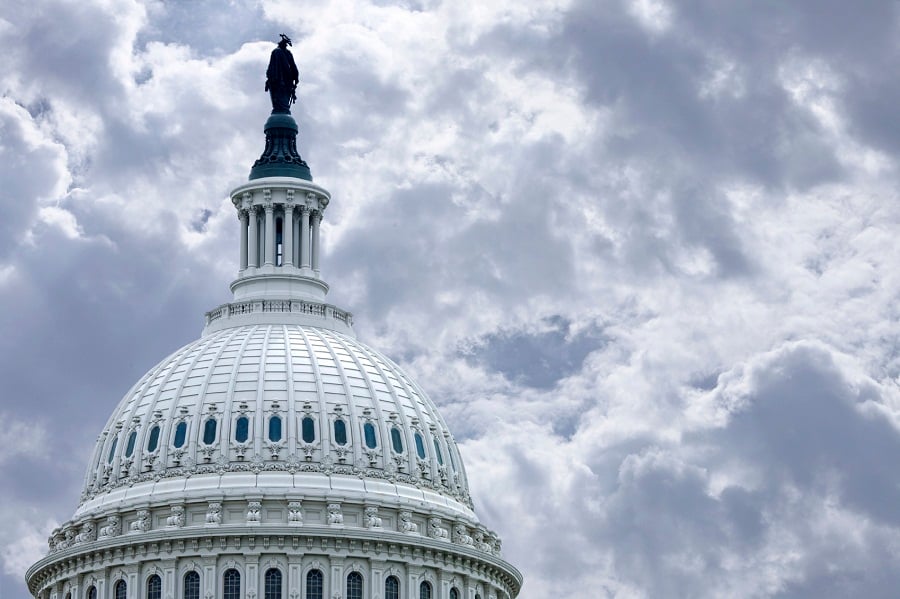

Tax reform proposals to finance the massive budget bill being cobbled together in Congress would close the door on an increasingly popular retirement savings strategy among advisers’ wealthy clients.
Wednesday, the House Ways and Means Committee approved on a mostly party line vote, 24-19, legislation that comprises its portion of a sweeping $3.5 trillion Build Back Better Act that contains Biden administration priorities for social and climate programs.
The panel's measure features an array of provisions — including paid family and medical leave and a mandatory auto-IRA program for small businesses — as well as approximately $2.3 trillion in tax increases on high-income Americans to help finance the larger budget bill.
After 40 hours of debate over four days, the committee's Democratic majority advanced the legislation. One Democrat joined all Republicans in opposing it.
"These life-changing provisions will level the playing field, expand opportunity and rebuild our economy to be more equitable and inclusive," Chairman Richard Neal, D-Mass., said in a statement.
Rep. Kevin Brady, R-Texas and ranking member of the committee, asserted that the legislation raises taxes on the middle class and small businesses.
The proposed tax increases are the first that have been put in legislative language in the so-called budget reconciliation process — a parliamentary approach that bypasses a Senate Republican filibuster and requires the support of almost all House Democrats and every Senate Democrat.
Among its many tax provisions, the Ways and Means proposal would increase the top individual tax rate to 39.6% and the top capital gains rate to 25% while imposing a 3% surcharge on adjusted gross income in excess of $5 million, according to a summary.
It also would curb large retirement savings accounts for high-income earners. One of the reforms targets a strategy for making contributions to Roth individual retirement accounts.
In a so-called “back-door” Roth conversion, taxpayers whose incomes exceed the limitation for a Roth IRA make a contribution of after-tax money to a traditional individual retirement account and then convert that contribution to a Roth IRA.
The money in the Roth IRA can then grow tax-free and be taken out tax-free in retirement. In a traditional IRA, contributions are tax-deferred and retirement withdrawals are taxed.
Under the Ways and Means measure, Roth conversions would be prohibited for individuals with taxable income of more than $400,000 and married couples with taxable income of more than $450,000 as of Dec. 31, 2031.
Despite the 10-year phase out, the policy change could immediately affect financial planning for wealthy clients who have complex estates and generational transfers, said Jonathan Duggan, an adviser at Hemington Wealth Management.
“Maybe now [a Roth conversion] is something you have to think about doing more proactively,” Duggan said. “They’ve now got a clock ticking on that that decision.”
Another Roth conversion change would happen sooner. The bill would prohibit all after-tax contributions to company retirement plans and to traditional IRAs from being converted to a Roth IRA regardless of income level. That provision would take effect on Dec. 31 of this year.
“It really limits what folks can do with that after-tax money,” said Brandon Garrett, president of BentOak Capital.
President Joe Biden and congressional Democrats indicated as early as last year’s election that they would attempt to raise taxes on the wealthy. But the limits on Roth conversions caught Julie Hall, an adviser at Vision Capital Partners, by surprise.
She said Roth IRAs are the second-most tax-advantaged account she recommends to clients, following health savings accounts.
Find out What accounts may be converted to a Roth IRA here.
“That piece alone is like, ‘Wow!’” Hall said, referring to the Roth reforms. “We’ve been wondering how long Roths will stay as tax-favorable as they are.”
Hall recommends Roth conversions when they make sense in a financial plan.
“From that perspective, [the Roth restriction] is not going to be a good thing for our clients,” she said.
But the Ways and Means measure is a long way from becoming law. A Senate bill may not include the same tax provisions.
In addition, the legislative path for Build Back Better requires that almost all Democrats in the House — where the party has a three-seat margin — and all Democrats in the Senate — where the party has 50 members — back the bill.
That political balancing act could come tumbling down. Some moderate Democrats have raised concerns about Build Back Better. Uncertainty will continue for weeks or months.
“It’s going to take longer than expected, and the bill is going to go through significant changes in the process,” said Jorge Castro, a member at Miller & Chevalier. “It’s very unlikely it will look like the Ways and Means Committee product.”
Financial advisers were relieved that the House Ways and Means tax proposal was less expansive than anticipated. For instance, it did not contain a provision to end the so-called step-up-in-basis and tax unrealized capital gains on inherited assets.
Castro, a former Democratic tax counsel for the House Ways and Means and Senate Finance committees, doesn't expect the tax provisions to become stronger as Democrats try to find common ground.
"At this stage of the process, the legislation is likely going to become more moderate," he said.
Editor's Note: This story was corrected to clarify the distinction between a Roth conversion and a back-door Roth IRA.

Executives from LPL Financial, Cresset Partners hired for key roles.

Geopolitical tension has been managed well by the markets.

December cut is still a possiblity.

Canada, China among nations to react to president-elect's comments.

For several years, Leech allegedly favored some clients in trade allocations, at the cost of others, amounting to $600 million, according to the Department of Justice.
Streamline your outreach with Aidentified's AI-driven solutions
This season’s market volatility: Positioning for rate relief, income growth and the AI rebound
